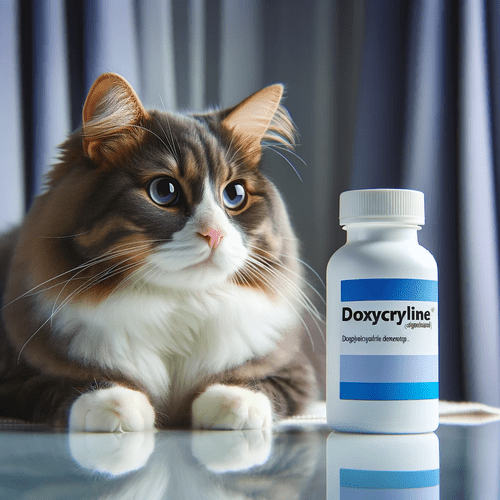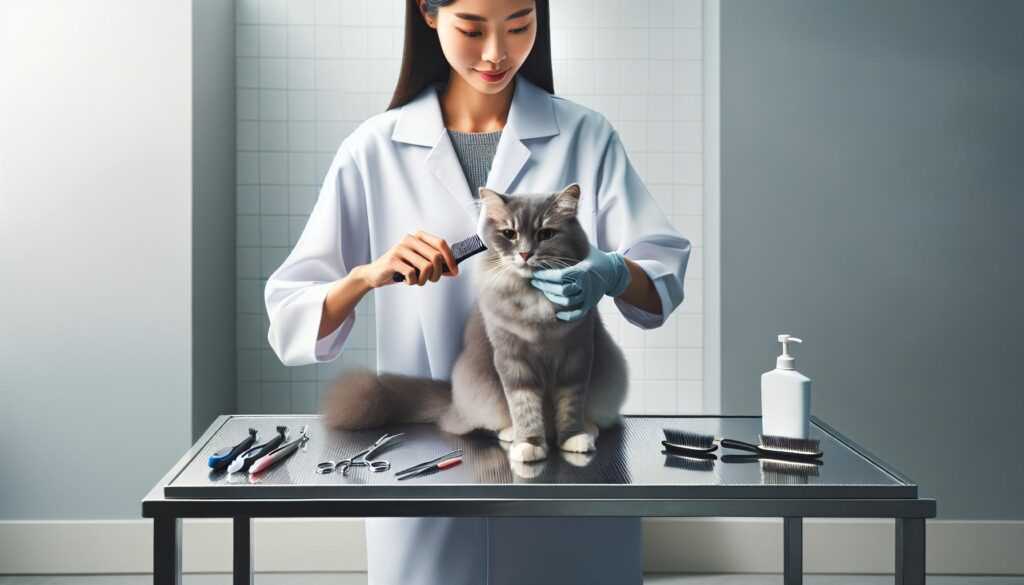
Doxycycline In Cats
Doxycycline, an antibiotic, helps keep felines healthy. This drug efficiently treats a range of infections in cats, ensuring their well-being. It inhibits the growth and reproduction of bacteria in your cat’s system. This prevents the spread of diseases and aids in the healing process. Its broad spectrum enables it to battle a variety of enemies, making it an invaluable resource for veterinarians.
When Does Your Cat Need Doxycycline?
Doxycycline is beneficial against the following infections in cats:
UTIs can cause discomfort and frequent urination in cats. Doxycycline successfully targets bacteria in UTIs.
Respiratory infections: When caused by bacteria, upper
Doxycycline can effectively cure respiratory infections with symptoms such as sneezing, coughing, and congestion.
Skin infections: Doxycycline can help treat bacterial skin concerns such as itching, redness, and hair loss.
Tick-borne illnesses : Doxycycline is sometimes used by veterinarians in conjunction with other drugs to treat disorders such as Lyme disease in cats. When using doxycycline, it is crucial to remember the following points:
Doxycycline is a prescription medicine; thus only a licenced veterinarian can assess whether it is appropriate for your cat.
Dosage Instructions: It is critical to administer the dose as prescribed by your veterinarian for maximum efficiency. To reduce potential adverse effects.
Side Effects Doxycycline, like any other medicine, can cause side effects in certain cats, including nausea, vomiting, and diarrhoea. Any concerns?
This should be reviewed with your veterinarian. If you believe that your cat has an infection, work closely with your veterinarian. They can diagnose the problem. Determine whether doxycycline is the treatment. With a correct diagnosis and ongoing veterinary supervision, doxycycline can help cats fight infections and improve their general health.
Access for pet owners.

How Does Doxycycline Function in Cats
Doxycycline belongs to the tetracycline group of antibiotics and operates by inhibiting the protein synthesis essential for bacteria’s survival. When these proteins are blocked, the structure of the bacteria’s cell wall changes, affecting its ability to replicate and grow effectively.
Potential Adverse Effects of Doxycycline
- The most common side effects seen in dogs and cats treated with doxycycline include gastrointestinal disturbances such as nausea, vomiting, diarrhoea, loss of appetite, lethargy and reduced appetite. Administering oral antacids can help alleviate these symptoms.
- Cats may face an increased risk of developing esophageal strictures (narrowing of the throat) if given doxycycline in pill form without adequate water intake. To minimize this risk, it is recommended to provide water to the cat after administering the pill or use a liquid formulation to prevent esophageal damage.
Additional Precautions for Using Doxycycline
- It is advisable to avoid using doxycycline and other tetracycline antibiotics during pregnancy due to potential risks such as skeletal limb abnormalities and tooth discolouration. While doxycycline may carry lower risks compared to other tetracyclines, its use should be limited unless the benefits outweigh possible drawbacks.
- Exercise caution when administering this medication to pets with significant liver issues or young animals still undergoing bone and teeth development.
- Doxycycline can lead to heightened sensitivity to sunlight.
- Limit exposure to direct sunlight or extended periods of sun exposure.
- Elevated levels of liver enzymes in bloodwork may be more common in dogs than in cats.
- Avoid using Doxycycline in animals with a known hypersensitivity or allergy to the medication.
Interactions with Doxycycline
Administer oral doxycycline separately from oral antacids, calcium supplements, bismuth, kaolin or pectin-containing products by 1 2 hours. Iron supplements can also affect the absorption of doxycycline and should be spaced out by three hours.
It is generally not recommended to combine doxycycline and other tetracycline antibiotics with bactericidal antibiotics like penicillin, cephalosporin and aminoglycosides.
The concurrent use of enrofloxacin and doxycycline may diminish and delay enrofloxacin’s activity against Escherichia coli in vitro.
Tetracycline antibiotics could impact clotting times. Animals on warfarin or other anticoagulants may require additional monitoring and dosage adjustments.
Phenobarbital might decrease the half-life of doxycycline.
FAQs about Doxycycline for Cats
- Is Doxycycline safe for all cats? Doxycycline is safe for most cats, but a veterinarian should always evaluate individual cases.
- How long does it take for Doxycycline to work in cats? Improvement is often seen within a few days, but the full course of treatment is crucial for complete recovery.
- Can Doxycycline be used for kittens? Yes, but with caution and under strict veterinary supervision due to potential effects on teeth and bone development.
- Are there any natural alternatives to Doxycycline? While natural remedies can provide support, they should not replace antibiotics in treating serious infections.
- What should I do if my cat experiences side effects? Consult your veterinarian immediately if you notice any adverse reactions in your cat.
- Can Doxycycline be used alongside other medications? It can be combined with many medications, but always consult your vet for safe combinations.
Conclusion
Doxycycline stands as a cornerstone in feline healthcare






